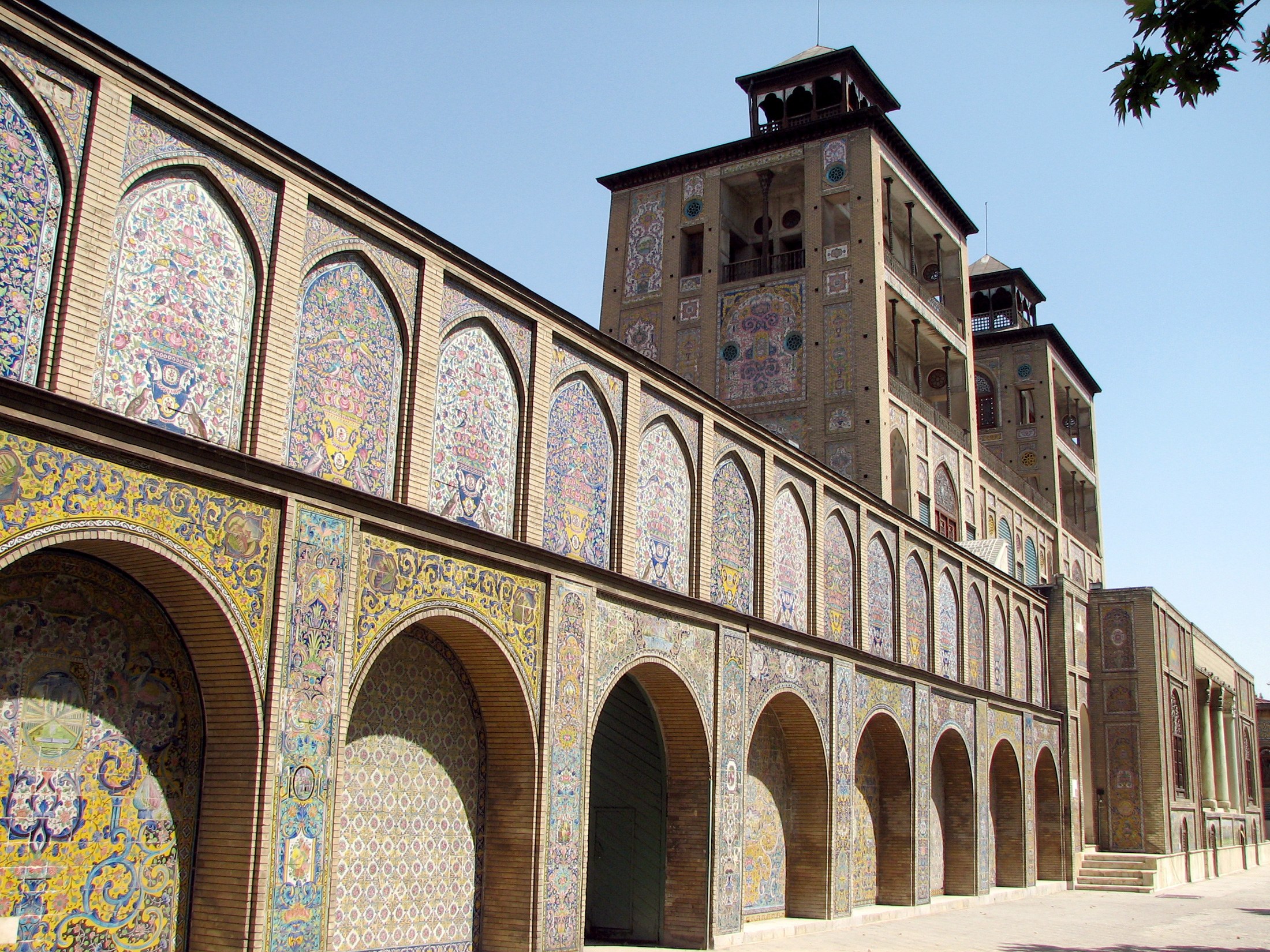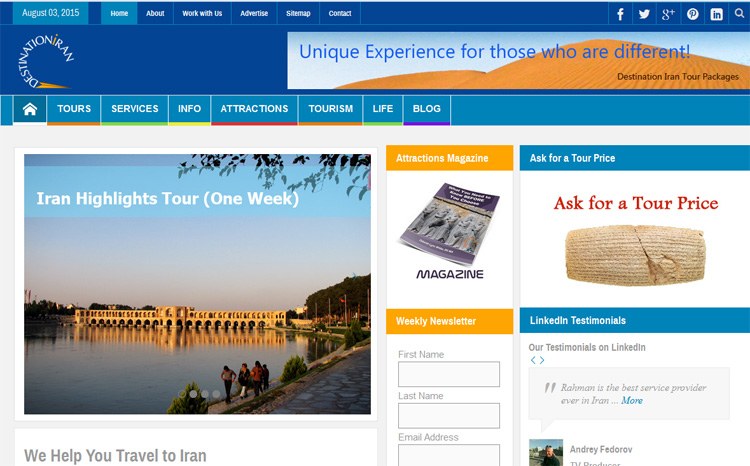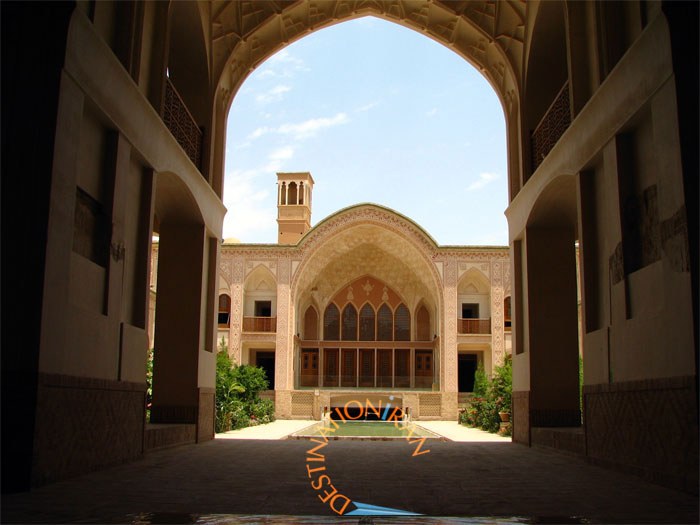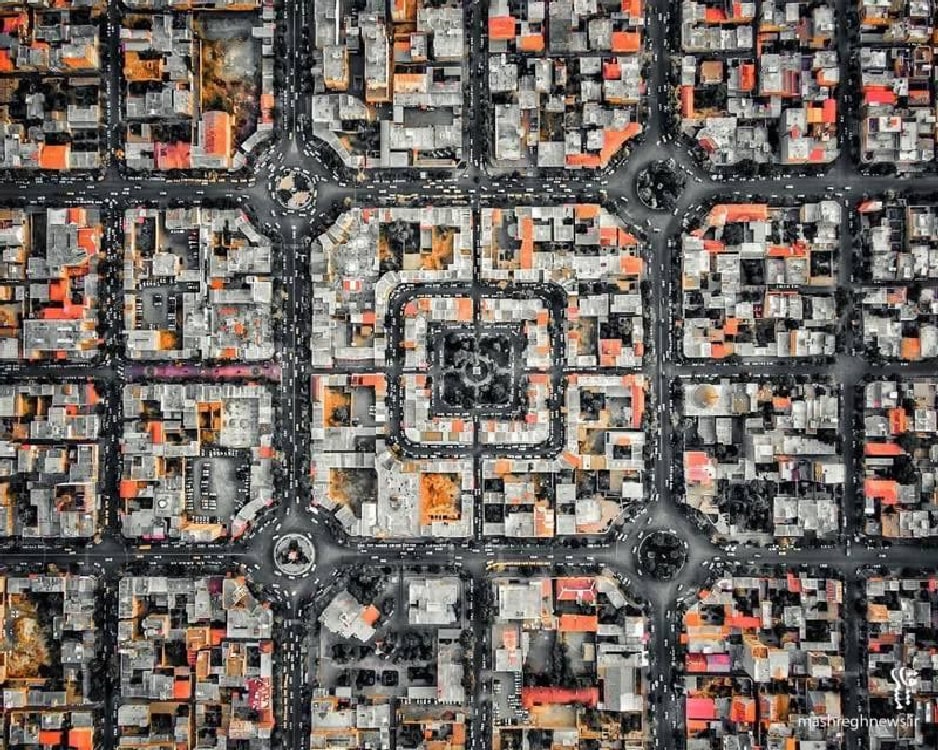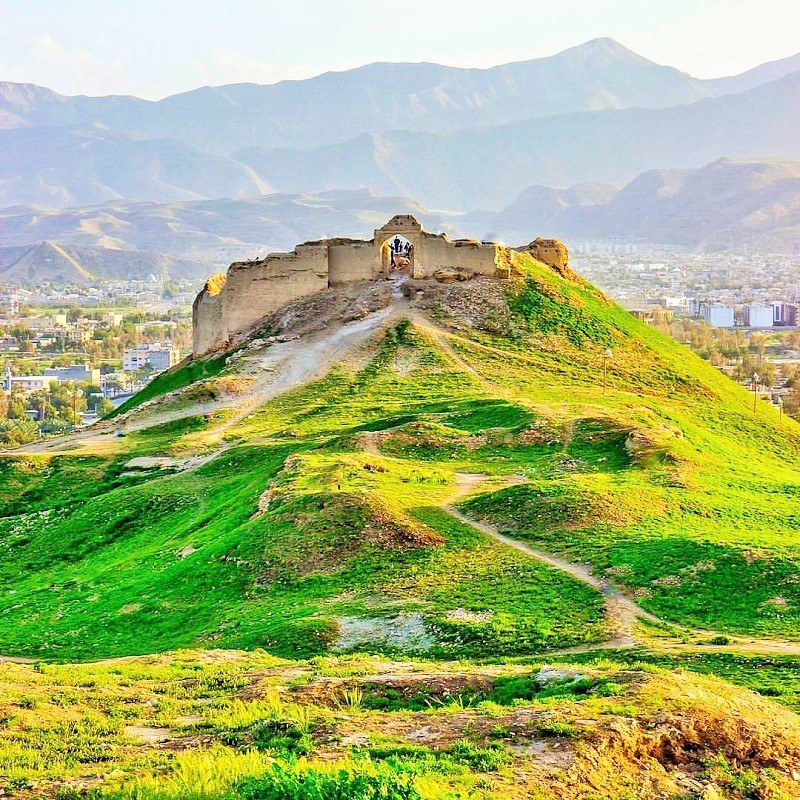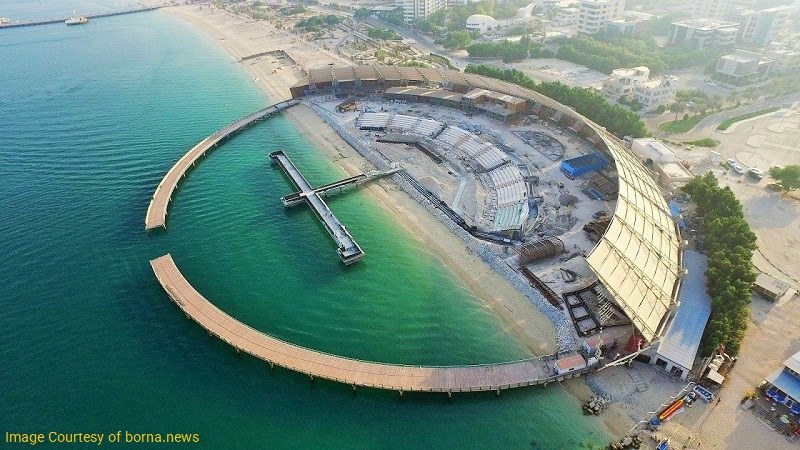
Yazd is a desert city well-known for its wind catchers, Zoroastrians, Termeh (traditional brocade), silk weaving, baqlava and qotab (local sweets), etc. The old houses of Yazd have got typical desert architecture elements like wind catchers in them, which are highly interesting as ancient green-technology air-condition systems …
Introduction of Yazd
You should visit Yazd tourist attractions to believe what you have read or heard about it. It is one of the most well-known desert cities in Iran that is famous for several reasons. Many Iranians and non-Iranians like to visit this city as they have heard about its historical and natural attractions.
Many visit Yazd in order to see the vernacular architecture found in desert areas. It is known as the city of tourist attractions like windcatchers, Zoroastrians, Termeh (traditional brocade), silk weaving, baqlava and qotab (local sweets), etc.
A trip to Yazd during your Iran tour explorations will make you familiar with life in desert towns and how people cope with it. You learn about the underground water supplement system (Kariz or qanat) for which Iranians are well-known. The water reservoirs, icehouses, windcatchers, and pigeon towers make it worthwhile to have a visit to Yazd and explore the uniqueness of this ancient city of Iran.
Geography of Yazd
Yazd is located almost 270 km southeast of Isfahan. The altitude of Yazd is approximately 1210m above sea level. There are high mountains to the south of the city and Taft area where lots of Yazdi people take short trips to spend hot summer days or weekends in its moderate climate. The city itself is very hot and dry in summer due to its location which is between two main deserts of Dasht-e Kavir and the Kavir-e-Lut.
The average annual temperature in Yazd is 19°C and the average annual rainfall in this city is 62 mm. Yazd is the driest province of Iran.
Here are the different ways of traveling to Yazd.
- By car
Yazd is 631 km away from Tehran and it takes about 6 hours and 33 minutes by car. Traveling by car from Tehran to Yazd, you will pass through Qom, Kashan, Ardestan, Naein, Ardakan and Meybod cities. It is possible to travel to Yazd by personal car or bus. South and West terminal of Tehran have daily buses leaving to Yazd.
- By airplane
The flight length from Tehran to Yazd is about 1 hour and 10 minutes. There are weekly flights from Yazd to Mashhad, Bandar Abbas, Ahvaz, and Tehran. If you are traveling by plane to Yazd, you will descend at Shahid Sadooqi Airport. The airport is located 10 km from the city center and you can reach there by taxi.
- By train
Traveling from Tehran to Yazd by train through Tehran Railway Station takes about 6 hours.
Population & Economy of the City
Yazd has a growing population of approximately 560,000 inhabitants. It also attracts more people to live in this city.
The ancient caravan routes went through Yazd since a long time ago and people were more involved in trade than agriculture. Traditionally Yazd has been famous for Termeh, the brocades made with Iranian patterns and sold them to the travelers who passed by this city.
Zoroastrians used to pay special attention to farming and the farmers actually worked in adjacent villages at foothills and close to the sources of water devised by Kariz system.
Today a lot of tile and porcelain factories are operating outside Yazd attracting laborers and producing good quality products for domestic as well as international markets.
In addition, Yazd is famous for its many pastries and confectionaries. Halva Ardeh (Ardeh is a concentrated liquid extracted from milling sesame), Cake Yazdi, Qottab, Baqlava, Pashmak Yazdi (cotton candy), Noql (sugar-coated almonds), various pastries, various Sohans (traditional Persian saffron brittle toffee) and Lovuez (diamond-shaped confectioneries) are among the souvenirs of Yazd. Iranians export these products to other countries.
History of Yazd
Originally, Yazd was called Isatis at the time of the Median Empire when it emerged. The city prospered under Sassanians when it was a center of the followers of the Zoroastrian faith. Because of its remoteness from central Iran and populated areas, it has escaped devastating assaults of the foreign invaders like Chengiz Khan. Instead, it has turned into a safe place for the migrants who were looking for another city to relocate.
However, like many other desert towns, the inhabitants of this city had to protect themselves by building high walls around the city 900 years ago and reconstruct it after each attack.
Yazd became the capital city of Muzaffarid dynasty who ruled there in the 14th century. They fled to Yazd after Khorasan, their original birthplace was attacked by Mongols. Some of the rulers stayed in Meybod, another town in this province to the north of Yazd. During the late 18th century and simultaneous with the rise of Qajars, Bakhtiari khans were ruling in Yazd.
There were not many improvements during Safavids in Yazd. On the contrary, the inhabitants saw the deterioration of urban infrastructure. However, under Qajars the city started to thrive as a result of the extensive trading demands. Therefore, the city grew physically:
- new residential areas were annexed to the previous ones,
- facilities like baths were built for the people,
- more areas were added to the bazaar,
- etc.
A great number of what has been left from the former dynasties and people supporting arts and architecture are now considered Yazd tourist attractions. They work like a tourism magnet and attract many to this desert city from inside Iran as well as abroad.
Historical Attractions inside Yazd City
Here’s a list of these historical attractions inside Yazd:
Historical City of Yazd
This is the oldest part of the city still inhabited. The houses at this part of the city are made of sun-dried bricks and walls are made of mud and straw. Some of the oldest monuments of the city are found here.
Ancient Walls & Battlements of Yazd
The walls and battlements of the city the defensive measures to protect the citizens from the enemies. This monument of Yazd is within the UNESCO inscribed world heritage site called the Historical City of Yazd.
Yazd Friday Mosque
This is the grand congregational mosque of the 14th century built by well-known Yazdi architects. It has the tallest minarets in Iran and exquisite mosaic work still inspiring local artists.
Mirchaqmaq Tekiyeh
This is the mourning structure used by Shiite mourners who commemorate the martyrdom of Imam Hossein, Fatima, etc by sitting in its cells and watching the religious passion play and the mourners parade in front of the structure.
Water Museum
Affiliated to the water organization, this museum showcases how water has been supplied using various tools, methods and traditions. This is probably the best museum of water in the entire country with this topic.
Varahram Fire Temple
The most famous fire temple of Zoroastrians, Varahram is widely known for the age of its fire, which is approximately 1500 years old and never extinguished. In Persian, it’s called Atashkadeh-e Yazd.
Towers of Silence
Known as Dakhmeh, they are the high places surrounded by a wall on top of the hills where people’s corpse used to be disposed to the vultures to be eaten by them.
Boqeh Davazdah Imam
This is the oldest structure in Yazd still standing as a memorial building constructed approximately 900 years ago in honor of 12 Imams of Shiites.
Alexander Prison / Harun Prison
This is actually a 14th century school (madrasah) with relatively plain decoration. The real name is Zia’ieh, but it is called a prison because of the octagonal pit below the level of its courtyard that looks like a dungeon.
Dowlat Abad Garden
This is a typical Persian Garden that used to be the house of Yazd governor in 18th century with the tallest windcatcher of yazd, 23m. Dowlat Abad Garden is one of the 9 Persian gardens in UNESCO’s list of world human heritage.
Yazd Windcatchers
The windcatcher is a vertical chamber made of brick or sun-dried brick designed for transporting and cooling the wind to the underside. There are so many windcatchers in Yazd that the city is famous for windcatchers’ city.
Yazd Sabat
Sabat is a ceiling above the alleys and passageways to create a shadow for pedestrians. There are usually benches around the sabats for passersby to sit and rest on for a moment.
Sa’at Square of Yazd
The oldest clock tower (Meydan-e Saat) in Iran is located in Yazd. According to the book entitled Jame’e Mofidi, this sundial is the first city clock installed in Iran. The clock is installed at Roknieh School near Yazd Friday Mosque. Later, this place became famous as Times and Clock Square.
Naji Mansion and Garden
This mansion garden belongs to the Qajar era. It is, in fact, a mansion in the middle of a garden and on the route of Najafabad Qanat.
Qasr-e Ayeneh Mansion
It is also known as the Museum of Mirror and Lighting. The mansion belongs to the Pahlavi era (1941) and was originally a private guesthouse.
Tehrani-ha House
This house belongs to 250 years ago. For a long time, it was the economic consul of some European countries. This traditional hotel overlooking the historical district of Yazd has a main courtyard, Narenjestan (orangery), a pavilion and a windcatcher. Now, this house is active as the first Iranian museum hotel called Fahadan Museum Hotel.
Khan Bazaar and Bath
This beautiful and old complex is a combination of a bazaar, a Hosseiniyeh (a congregation hall for Shia Muslim to hold commemoration ceremonies), a water storage and an adjacent bathroom. Construction of this complex dates back to the time of Nasser al-Din Shah. Khan Bazaar is the longest and widest bazaar in Yazd City. It is made of sun-dried brick and clay.
Malek ol-Tojar House
The construction of this monument dates back to 120 years ago. It consists of numerous rooms, each with its own features. On the walls and ceilings of most of the rooms, there are paintings that have taken up to 10 years to draw. Today, the building is used as a hotel.
Markar Square
This square and its clock (Ferdowsi Clock) are located exactly in the center of Iran. Next to this square, there are monuments such as high school and orphanage. A Zoroastrian called Mr.Markar has built these monuments with his personal expense. They are available to the public.
Wooden Structure of Amir Chakhmaq Square (Nakhl-e Heydari-ha)
Nakhl-e Choobi is the oldest wooden structure in Iran. It is 450 years old and belongs to the Safavid era. It is also famous Nakhl-e Heydari-ha. This Nakhl is 8.5 meters high and each side of its square base is 8.5 meters.
This wooden structure is a netted set of carved wood with girih (a decorative Islamic geometric artform) and large beams. It has the form of a cedar tree (symbol of liberty in Iran). It is interesting to mention that the largest Nakhl of Iran with the same characteristics is located in Zarch County, in Yazd province.
The people of Yazd carry the wooden Nakhl during the mourning period of Imam Hussein. There are 150 people required to carry the Nakhl wooden structure during this special ceremony. Nakhl is a reminder of Imam Hossin, the third Imam of twelve Shiites, being repressed by his enemies and also a symbol of liberty-seeking.
Shesh Badgir Water Reservoir of Yazd
Shesh Badgir means six windcatchers in Persian. As there are 6 windcatchers installed on the water reservoir, it is known as Shesh Badgir. It is also the only water storage facility in the world with six windcatchers. Due to the climate and wind direction in the area, Shesh Badgir Water Reservoir has an octagonal form.
In addition, in another case, Yazd province has the only seven-windcatcher water storage with two tanks in the world. The latter is located in Asr Abad Village.
Lariha House
The monument belongs to the Qajar period. It is a house with two internal and external parts (Andarouni and Birouni). The courtyard is in the center. The northern part is used in the winter and the southern part, including a hall and a windcatcher, is used in the summer.
Yazd Art House (Baam-e Yazd)
The monument is one of the houses of the Malekzadeh Historical Complex belonging to the Qajar period. The complex is located in the historical district of Fahadan, near the Zia’iyeh School (Alexander’s Prison) and the Lariha House. In addition to visiting a historical monument, you can go to other places such as café, handicraft shop, art gallery and watch the historical district of Yazd from the roof of the Art House.
Rostam Giv Water Reservoir
This water reservoir is located in a Zoroastrian neighborhood of Yazd. It belongs to the Qajar period and is one of the beautifully designed monuments of this category due to its exterior brick arrangement.
Abul Ma’ali Bath
The building dates back to the Qajar period and was active until 40 years ago. Now, it serves as a traditional restaurant in the historical district of Yazd, opposite Alexander’s Prison, next to the thousand-year-old tomb of the 12 Imams and adjacent to Chehel Mehrab Mosque.
Historical Attractions outside the City
Here’s the list of historical attraction of Yazd outside the city:
Zein-o-Din Caravansary
This is the only circular caravansary in Iran located in Mehriz County on Yazd-Kerman route. Zein-o-Din Caravanseary is one of 99 caravansaries built by Shah Abbas in Iran, with the only difference of its circular architecture.
Today, Zein-o-Din Caravansary is a traditional hotel. It is 400 years old. It is also enjoyable to watch the starry sky of the desert from its courtyard or rooftop at night.
Hojat Abad-e Vazir Complex
The complex is located in Saduq County. The construction of this complex dates back to the late years of Nasser al-Din Shah reign. Hojat Abad-e Vazir is located on the route of Hojat Abad Qanat. The mansion is about 130 years old. There is also a bath, a Bazaarcheh (small marketplace) with various shops, and a water reservoir next to it.
Vazir-e Hojat Abad Caravansary of Rezvanshahr City was the temporary residence of numerous caravans passing through the desert. There is also a Kaleskeh Khaneh (carriage house/station) in a corner of the garden that was a special place for horses and the carriages of the minister and his companions.
Chak Chak Shrine (Pir-e Sabz)
The shrine is located 68 kilometers northwest of Yazd, on a foothill of the same name in Ardakan City. This shrine is a sacred place for the Zoroastrians of Iran and the world and they pilgrim to it five days a year. Only Zoroastrians can visit and stay during these five days. Other visitors can go to this shrine at other times during the year. The shrine is open to tourists as a historical attraction of Yazd.
Zarch Qanat
This is the longest qanat of Iran with a length of 100 km, located in Yazd Province. In addition, it is one of the oldest qanats in Iran and has a history of more than three thousand years.
Natural Attractions of Yazd City
Here’s the list of fascinating natural attractions of the city:
Yeylaqat of Miankooh
Yaylaq (summer highland pastures) refers to such places in Taft City. They are of some of the most pleasant climates in Yazd. In general, Iranians have chosen to stay temporarily in these places during the heat of summertime. The distance between Yazd and Miankooh is only 24 km.
Shegeft-e Yazdan Cave
This ancient cave is located near Aqda City. It is one of the Zoroastrian sacred caves. It’s difficult to enter the cave, but there is a vast area inside the cave with the capacity of accommodating thousands of people. Zoroastrians have been guarding the sacred fire in this cave for many years. It is 97 km from Aqda City to Yazd.
Darreh Gahan Seasonal Waterfall
This waterfall is located in the southwest of Taft City and at the entrance of Fars Province. It is more than 20 meters high and is suitable for rock climbing.
Kavir-e Bafq Desert Camp
This area is about an hour and a half from Yazd toward the east. There is a camp where visitors can ride camels, go on a safari adventure trip, and ride motorbikes, drink tea and camp overnight.
Sandbad Desert Camp
The accommodation of Sandbad Desert Camp is similar to Kavir-e Bafq Camp, except that the visitors cannot camp there overnight.






